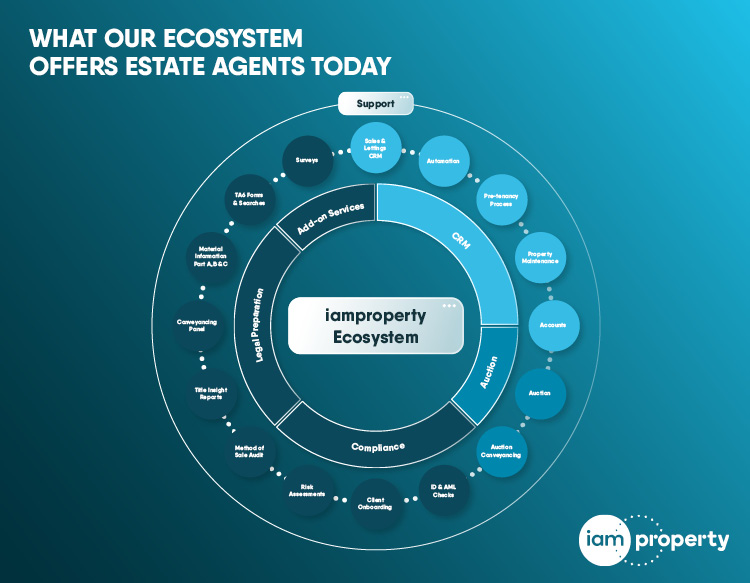If there’s not a book called ‘The Art of Collaboration’ then there should be. Update: a quick Google search shows there are a lot of books called ‘The Art of Collaboration’, which leads me to think original ideas are increasingly hard to come by.
However, none of those books appear to focus on the home buying/selling process, because if we’re being honest, then for a very long period there wasn’t exactly a whole lot of warmth towards collaboration, even though – ultra-ironically – that’s exactly what is needed in order to progress a case.
Yet, that I believe has changed, particularly in recent years as various stakeholders recognised there had to be a better way of doing this, and that it would need collaboration on a much wider and ingrained scale in order to get the outcomes we all want.
Just recently, I took part in a video debate hosted by tmgroup entitled: ‘Top 5: Initiatives to boost collaboration across the property transaction’ – you can watch it here.
It featured a number of industry figures and commentators who were all asked to provide their Top 5 initiatives, and what was particularly striking was the read-across between us, and while I wouldn’t say we agreed on everything, we did tend to agree on certain fundamentals that would help us all, not least our clients.
One of my focuses, as you might expect, is around the provision of material information, and agents will no doubt be aware of the National Trading Standards Estate & Letting Agent Team (NTSELAT) three-phase approach starting at the end of May with Part A which requires agents to deliver that information.
Now this has already been a requirement under Consumer Protection from Unfair Trading Regulations, but we have to admit it has sometimes been difficult to collate and provide this info. The material information must be relevant for the ‘average consumer’ and how do agents identify exactly what that is?
And here is where the collaboration, specifically between agents and conveyancers, will need to kick in, because it’s likely that the former will need the latter to work through all the information in order to ‘drag out’ what is material and relevant to those average consumers. Be aware that as we move through the NTSELAT’s next two phases, B and C, the need to collaborate will be even greater.
In other areas too, it’s my belief that the need for greater collaboration is going to become even more important. My second initiative is to have sellers instructing conveyancers at listing, in order to ensure that they can look through the material information, in order to provide it to potential buyers. It saves a huge amount of time and effectively will turn potential buyers into proceedable buyers because they’ll be able to see the information they have previously only got after they’ve put an offer in/had it accepted.
It will ensure those who can’t or don’t wish to proceed don’t end up going down a path they’ll eventually have to turn back from. It would also make sense for buyers to instruct their conveyancer as early as possible to again go through the material information provided and explain what it means to their planned use and enjoyment of the property.
Collaboration is also vital in terms of progress reporting because it is clear from all the consumer research undertaken that everyone involved in the transaction, indeed everyone involved in the chain, wants transparency, communication and certainty.
I used the analogy of the UK train system, and what the introduction of dot matrix signs in stations/platforms meant for consumers and the huge value they put on them. Knowing when your train was coming, if it was going to be delayed and by how long, was valued over all other kinds of initiatives because it gave the passenger ‘informed certainty’. In other words, they would be prepared to wait if they knew how long they’d have to wait for, and when they’d be able to get on the train.
It's the same for home buying/selling – at the moment, case management systems can tell you what is happening with your case, but they can’t tell you what is happening right across the chain, and that’s the information that is going to deliver that ‘informed certainty’. If agents and conveyancers can share this information then we’re likely to see less anxiety and stress, resulting in less need to deal with questions on this, which takes up less time within a working day, because everyone will be able to see at a glance where we are in the process.
Of course, there are other areas of the process which require change, particularly around the delivery of the information digitally, the one source of truth this can provide ensuring duplication of tasks doesn’t happen. This again, can cut down on post-valuation enquiries which add a significant amount of time to the process and should help us get rid of the huge number of fall-throughs we have every single year.
Overall, however, greater collaboration between stakeholders is likely to bring some significant benefits to everyone involved in the process, and rather importantly, the actual consumer. It will help deliver greater levels of certainty and will signpost exactly what is still to be done, and how long it might take to get to that final destination. We have made great strides in this area, and I believe we are much further down this road now than we have ever been.
*Beth Rudolf is the Director of Delivery at the Conveyancing Association (CA)
















%20-%20IMAGE%20Client%20Accounting%20%E2%80%93%20what%20are%20your%20options.jpg)


.png)
.png)
.png)
%20(002).png)






%20(002).jpg)





%20A%20property%20tale%20for%20our%20times.png)







Join the conversation
Jump to latest comment and add your reply
Which documents are required for Proof Of Income for mortgage or rent?
Which documents are required for Proof Of Income for mortgage or rent?
The mortgage approval process is one of the most vital steps to your home purchase. Unfortunately, it can also feel the most daunting. In general, there are 6 steps to the process, which can take anywhere from several weeks to several months.
Before you apply for a mortgage, make sure you have the required employment history that lenders look for and that you can provide suitable proof of income.
You can also get some professional help with Employment History OR Income Verification from this team via WhatsApp.
Call / Message on WhatsApp : +1 914 274 8666
1: Pre-approval
While not officially a part of the mortgage approval process, most buyers get pre-approved for a loan before they start shopping.
2: Application
Once you’ve found your home and your offer has been accepted, you officially apply for your mortgage. At this point, your mortgage lender will do a thorough check of your credit history, income, assets, debts, and all other financial factors.
3: Income Verification
One of the most important steps of the mortgage process is income verification.
You can also get some professional help with Income Verification from this team via WhatsApp.
Call / Message on WhatsApp : +1 914 274 8666
PRO TIP
The best way to ensure your chances of being approved for a mortgage is to have all of your necessary documents available and organized. Depending on your employment situation, these documents may include pay stubs, W-2 forms, tax returns, profit and loss statements, and bank statements.
4: Appraisal
Before a lender can approve a mortgage, a home appraisal must take place.
5: Title search and insurance
Before a mortgage can close, the lender will require a title search and title insurance through a title company.
Decision
Finally, the lender will make a decision on your loan.
Please login to comment